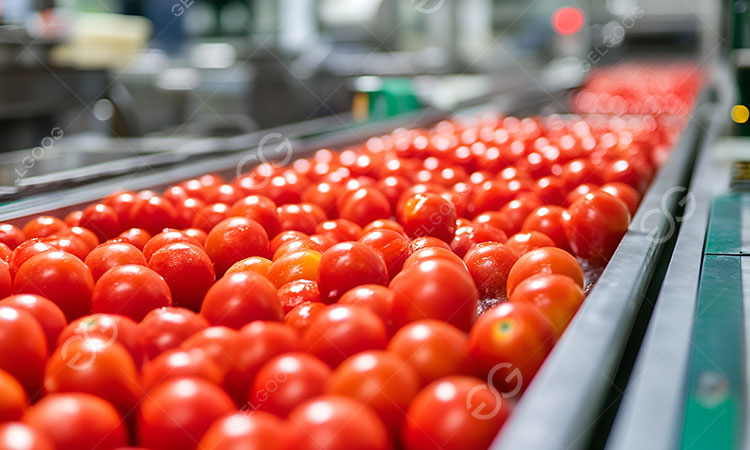Ketchup is a common condiment that is widely used in daily life. So how is tomato ketchup made in a factory? Below we will explain in detail the production process of ketchup in a factory.
- Sorting and cleaning
Freshly picked tomatoes first enter the sorting and cleaning stage. Through manual or mechanical sorting, rotten, unripe or damaged tomatoes are removed, and high-quality tomatoes with high maturity and bright red color are retained. Then a cleaning system is used to remove surface dirt and impurities.
Notes:
The quality of raw materials should be strictly controlled during sorting to prevent bad tomatoes from affecting the quality of subsequent processing.
During the cleaning process, the water source should be kept clean to prevent microbial contamination.

2. Peeling and pulping
After washing, the tomatoes need to be blanched or steamed to loosen the skin, then removed by peeling equipment, and then crushed by a crusher to make a coarse pulp. Then they enter the pulping machine for further refinement, separating the pulp from the seeds and skin to obtain tomato pulp with a fine texture.
Note:
The heating temperature and time should be properly controlled to avoid destroying the natural pigment and flavor of tomatoes.
The pulping equipment needs to be cleaned regularly to avoid residues that cause fermentation or mildew.
3. Concentration
The tomato pulp enters the concentration equipment, where water is removed by low-temperature evaporation, making the tomato pulp thicker and forming the basic form of tomato sauce. The concentration ratio depends on product requirements and can generally reach 3 to 6 times the concentration of the original pulp.
Note:
Vacuum concentration can prevent high temperature from destroying nutrition and flavor, which is the best process.
Scorching and wall adhesion should be avoided during the concentration process to ensure that the sauce is uniform.
4. Mixing and seasoning
According to the product formula, add sugar, salt, vinegar and other seasonings to the concentrated tomato pulp and stir thoroughly to form the final flavor of ketchup.
Notes:
The ingredients must be weighed accurately to ensure a consistent taste.
A certain temperature should be maintained during the mixing process to facilitate the full dissolution and fusion of the seasonings.
5. Sterilization
The mixed ketchup needs to be pasteurized to inactivate bacteria, mold and yeast and extend the shelf life of the product.
Notes:
The sterilization temperature and time must be strictly controlled to effectively sterilize without damaging the nutrients and color.
The sterilization equipment should be kept closed to prevent re-contamination.
6. Filling
The sterilized ketchup is sent to the aseptic filling line and filled into glass bottles, plastic bottles or soft packaging bags in a sealed environment, followed by sealing, labeling and packaging.
From raw material processing to final filling, every step is related to the quality and safety of ketchup. Scientific management and advanced ketchup production equipment are the key to ensuring the pure flavor and stable quality of ketchup.